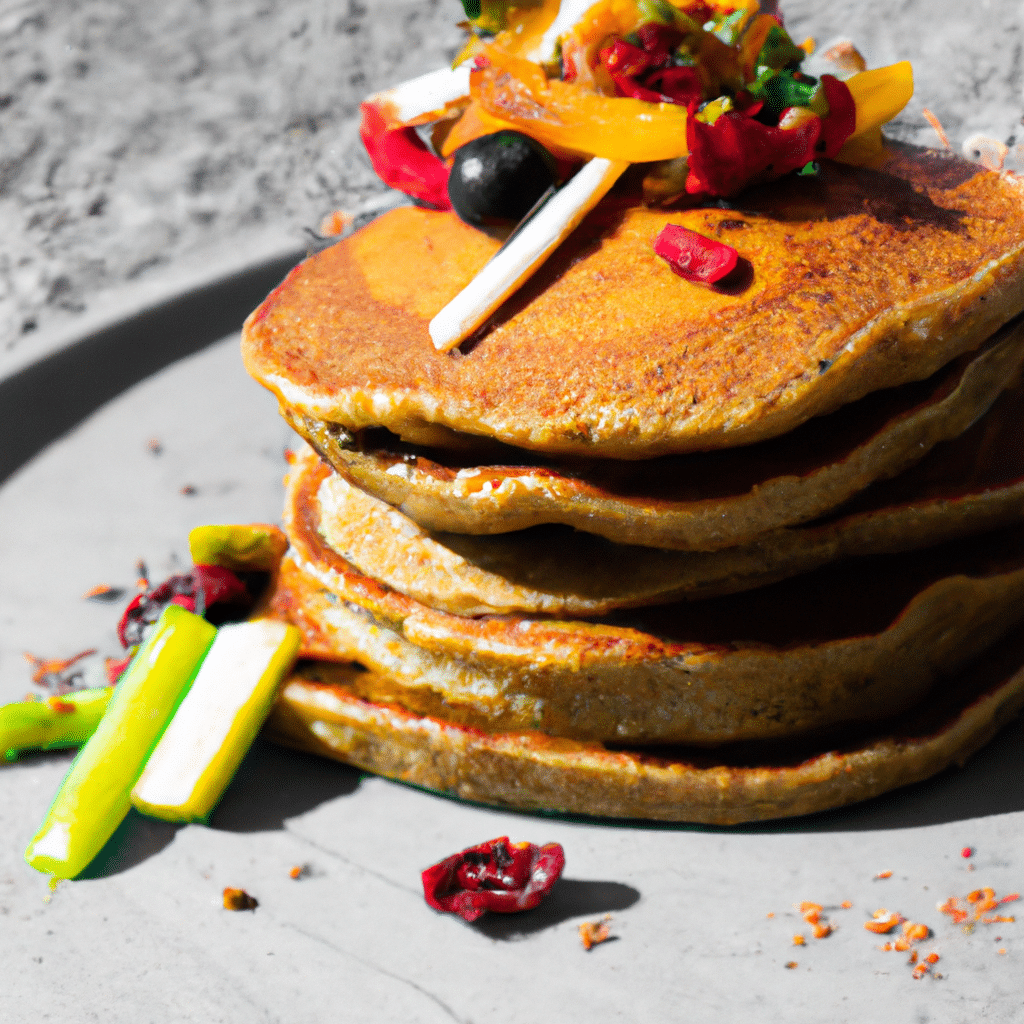Welcome to our ultimate guide on how to veganize traditional Korean pancakes! If you’re a vegan or simply looking for plant-based alternatives, you’ve come to the right place. In this comprehensive article, we will explore the rich flavors and textures of Korean pancakes while providing you with step-by-step instructions on how to recreate these culinary delights using vegan ingredients. Get ready to embark on a flavorful journey that will satisfy your taste buds and impress your friends and family!

Understanding Traditional Korean Pancakes
Before we dive into the veganization process, let’s take a moment to appreciate the beauty of traditional Korean pancakes. Known as jeon or buchimgae, these savory pancakes are a staple in Korean cuisine. They are often enjoyed as a side dish or appetizer and can be filled with various ingredients such as vegetables, seafood, or meat.
The key to a delicious Korean pancake lies in its crispy exterior and soft, chewy interior. The batter is made using a combination of flour, water, and eggs, which give it its signature texture. However, as we aim to create a vegan version, we will need to make a few substitutions to achieve similar results.
Veganizing the Pancake Batter
To veganize the pancake batter, we will replace the eggs with a plant-based alternative. One popular option is using flaxseed or chia seed “eggs.” To make a flaxseed or chia seed egg, simply mix one tablespoon of ground flaxseed or chia seeds with three tablespoons of water. Allow the mixture to sit for a few minutes until it becomes gelatinous, similar to the texture of an egg.
Alternatively, you can also use mashed bananas or applesauce as a binding agent. These natural sweeteners not only help hold the batter together but also add a hint of sweetness to the pancakes. Experiment with different options to find the one that suits your taste preferences.
Choosing the Right Flour
Traditionally, Korean pancakes are made using all-purpose flour. However, for a vegan version, you can opt for different types of flour to add nutritional value and unique flavors. Whole wheat flour, chickpea flour, or even rice flour can be used as substitutes. These alternatives not only offer a different taste profile but also cater to individuals with specific dietary needs, such as gluten-free or low-carb diets.
Enhancing Flavor with Seasonings
The secret to authentic Korean pancakes lies in the flavorful seasonings. While traditional recipes often include ingredients like fish sauce or shrimp, we can easily replace them with vegan-friendly alternatives without compromising on taste. Soy sauce, tamari, or liquid aminos can be used as a substitute for the umami flavor found in fish sauce. For the seafood-like taste, you can experiment with ingredients like seaweed or kelp powder.
Other essential seasonings include garlic, ginger, and green onions. These aromatic ingredients add depth and complexity to the pancakes. Feel free to adjust the quantities based on your personal preference, but don’t be afraid to embrace the bold flavors that Korean cuisine is known for.
Exploring Vegan Fillings
Now that we have the vegan pancake batter ready, let’s dive into the exciting world of fillings. Korean pancakes offer a wide range of possibilities, and you can get creative with your choices. Here are some ideas to get you started:
- Vegetable Pancakes: Fill your pancakes with a colorful mix of julienned carrots, zucchini, mushrooms, and spinach. These fresh and vibrant vegetables will not only provide texture but also a burst of flavors.
- Kimchi Pancakes: Kimchi, the beloved Korean fermented cabbage, can be a star ingredient in your vegan pancakes. Its tangy and spicy nature adds a unique twist to the dish. Make sure to squeeze out excess liquid from the kimchi to prevent the batter from becoming too wet.
- Tofu or Tempeh Pancakes: For a protein-packed option, consider adding crumbled tofu or tempeh to your pancake batter. These plant-based alternatives absorb flavors well and provide a satisfying texture.
- Vegan Seafood Pancakes: If you’re craving the taste of seafood, there are various vegan substitutes available in the market, such as vegan shrimp or imitation crab meat. These alternatives can be incorporated into the batter to create a delightful and satisfying pancake experience.
Cooking Techniques for Perfect Pancakes
To achieve the desired texture and taste, it’s essential to master the art of cooking Korean pancakes. Here are a few tips to help you create perfectly crispy and delicious pancakes:
- Use a non-stick pan or a well-seasoned cast-iron skillet to prevent the pancakes from sticking.
- Heat the pan over medium heat and add a small amount of oil. Swirl the oil around to evenly coat the surface.
- Pour a ladleful of the pancake batter onto the pan, spreading it out into a thin, even layer. Remember, thinner pancakes tend to be crispier.
- Cook the pancakes for a few minutes on each side until they turn golden brown. Flip them gently using a spatula to avoid breaking them.
- Once cooked, transfer the pancakes to a plate lined with a paper towel to absorb any excess oil.
- Serve the pancakes hot and fresh, garnished with sesame seeds and a dipping sauce of your choice.
Conclusion
Congratulations! You have now mastered the art of veganizing traditional Korean pancakes. By making simple substitutions and embracing plant-based ingredients, you can enjoy the flavors of Korean cuisine while staying true to your vegan lifestyle. Remember to experiment with different fillings, seasonings, and cooking techniques to make each pancake creation a unique and delightful experience. So gather your ingredients, put on your apron, and let your taste buds embark on a savory journey that will leave you craving more. Happy vegan pancake making!
